If you fancy a bit of history whilst you’re enjoying Croydon’s greenspaces, then this is the walk for you. Here guest writer Peter Hall takes us on his Green Line walk part 5, through the world of Archbishops and Kings in Addington Village and beyond to Three Halfpenny wood.
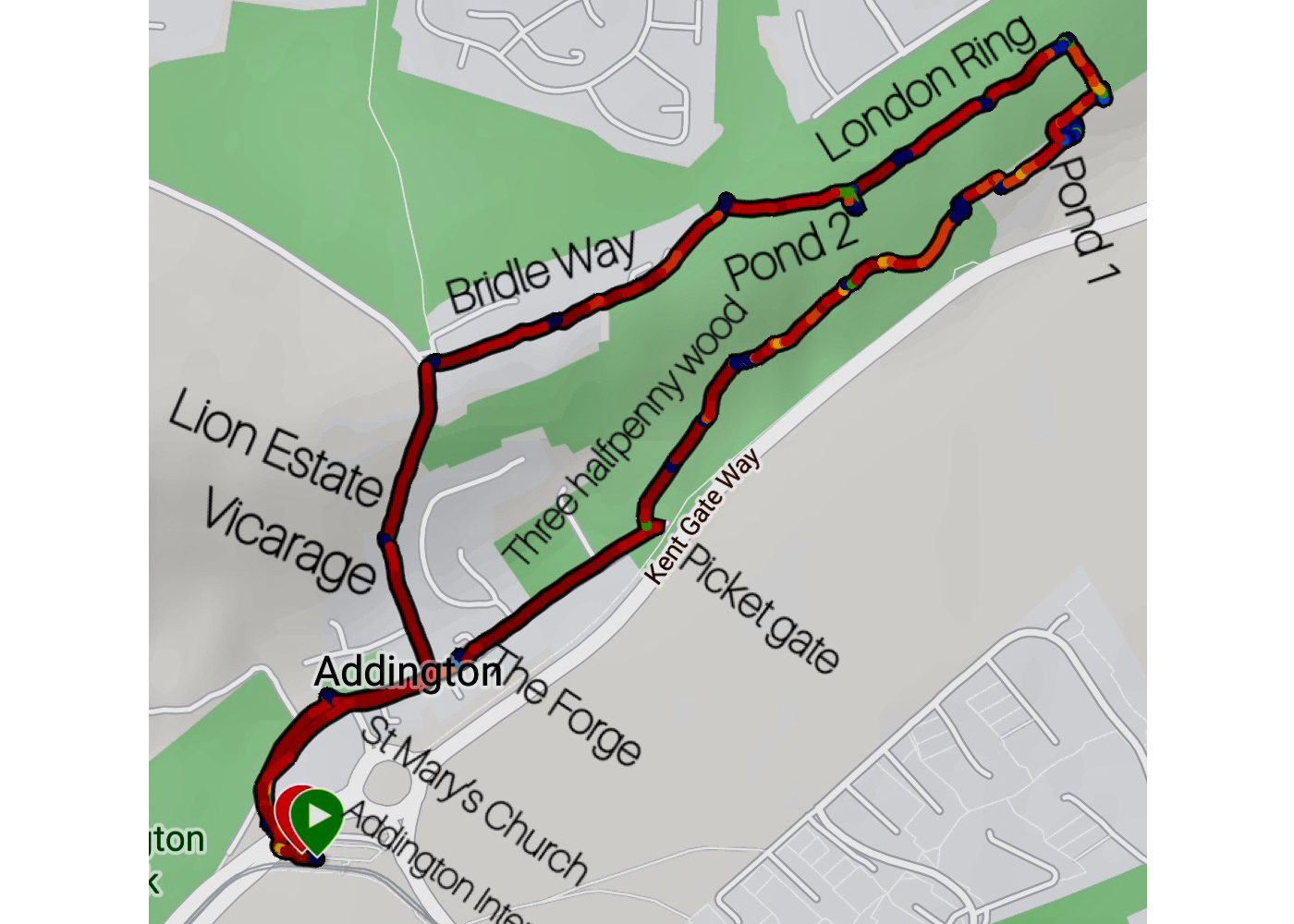
The Ancient Track to Three Halfpenny Wood
I believe that the tram line is one of Croydon’s greatest assets. The green logo and livery is so appropriate for a route which connects the town centre to many beautiful natural environments and makes nature accessible to all in our borough. I have been travelling the length of the line for several years, with my camera at my side. This walk starts at that most modern of tram stops, the Addington Interchange. Trams from Croydon rumble on to Croydon’s New Town of New Addington, but we are going to alight here and go back in time to explore the very old village of Addington and its ancient footpaths into a mysterious area of woodland.
On leaving the Tram from Croydon, walk in a Northerly (Croydon) direction to cross the dual carriageway – The Kent Gateway – towards the very prominent Shell Garage. There is a pedestrian crossing with lights, so that you can cross this busy road safely.
You are immediately on a pleasant green adorned with cherry trees in blossom in the spring. Cross the green and turn right onto the minor road known as Addington Village Road. The road passes behind the Addington Police Station. The pace of the modern life you left behind at the Interchange slows down, as you step back in history and pass on your left, what was once a long stable block built of local flint stones. You shortly reach the 940 year old church of Saint Mary, Addington. It is a Grade 1 listed building, built only fourteen years after the Norman Conquest. It is the oldest building in Croydon still in use for its original purpose and something of a jewel.
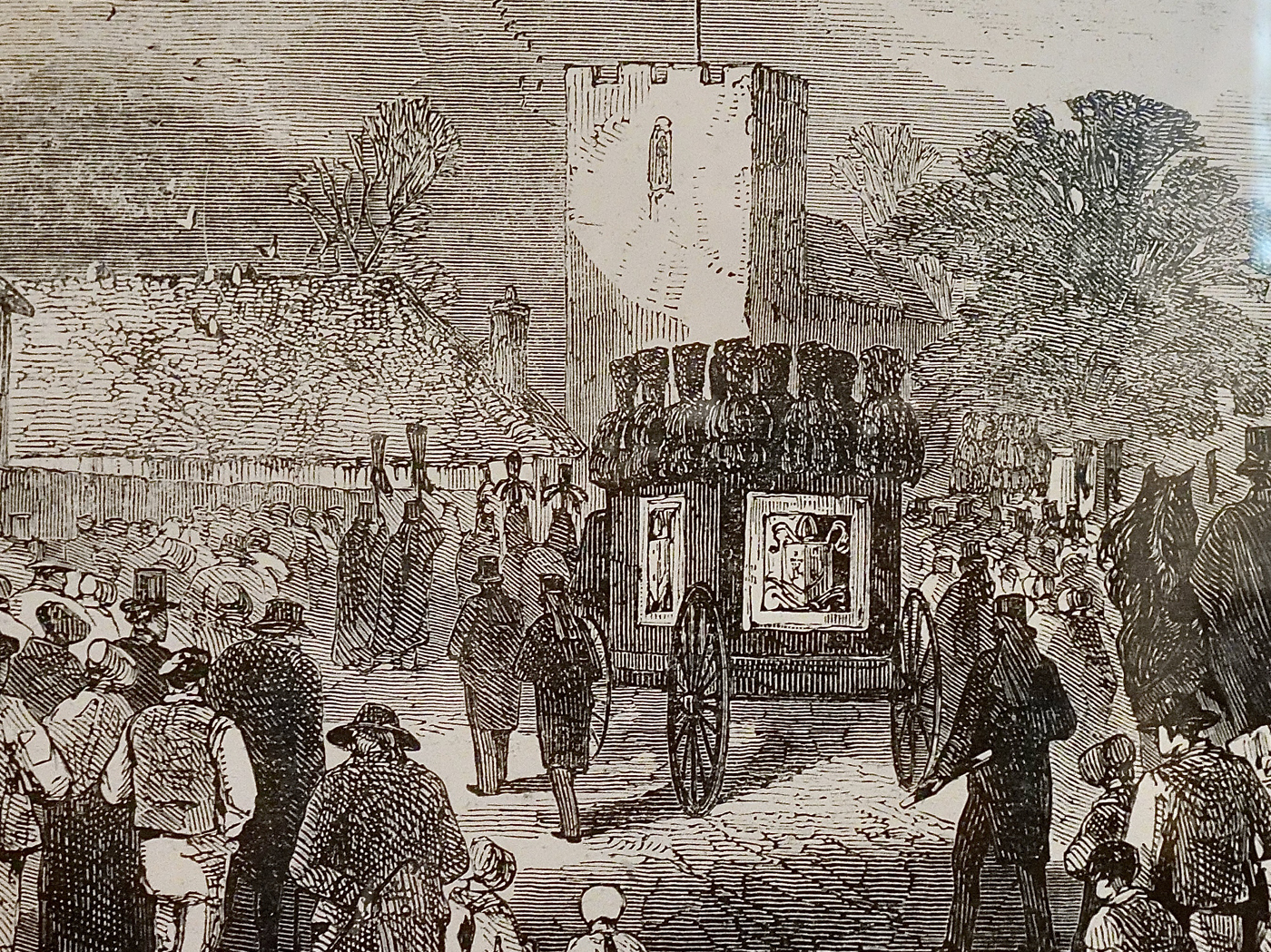
The church is surrounded by a seemingly oversized graveyard. It has been extended several times over the centuries and boasts a monument to five Archbishops buried here. This is the tall stone cross near the front, with the names of each Archbishop clearly visible. The presence of so many dignitaries in this sacred place of Croydon, is because it was on the route from Lambeth Palace to Canterbury. The Church of England acquired the nearby Addington Palace (formerly Addington Place) as a summer residence in 1808. It means that our walk along the Addington Village Road was once trod by the great and famous of the 19th century.
I have found that the church is open most of the time. It is well worth popping in for a visit. However, if you do so, and enjoy exploring and photographing its cool, quiet and subdued interior, illuminated only by the magical coloured beams of light streaming through stained glass windows, do make a small donation to its upkeep at the card machine placed by the door. Inside the church as you walk up to the altar area, you will see on your left monuments to four generations of the Leigh family who were the Lords of the Manor of Addington from 1446 until 1768. Nicholas Leigh was in favour with King Henry VIII who apparently stayed at the nearby Leigh Mansion, using it as a hunting lodge, and allegedly built a subterranean passage from there to nearby Wickham Court, so that he could visit Anne Boleyn who was staying there with her aunt. Plenty of romance and intrigue! Maybe the King also hunted along the paths we are about to walk. Also in the Church are some interesting 200 year old pen and ink drawings. The one of the Archbishop arriving in his carriage gives a real feel of the occasion.
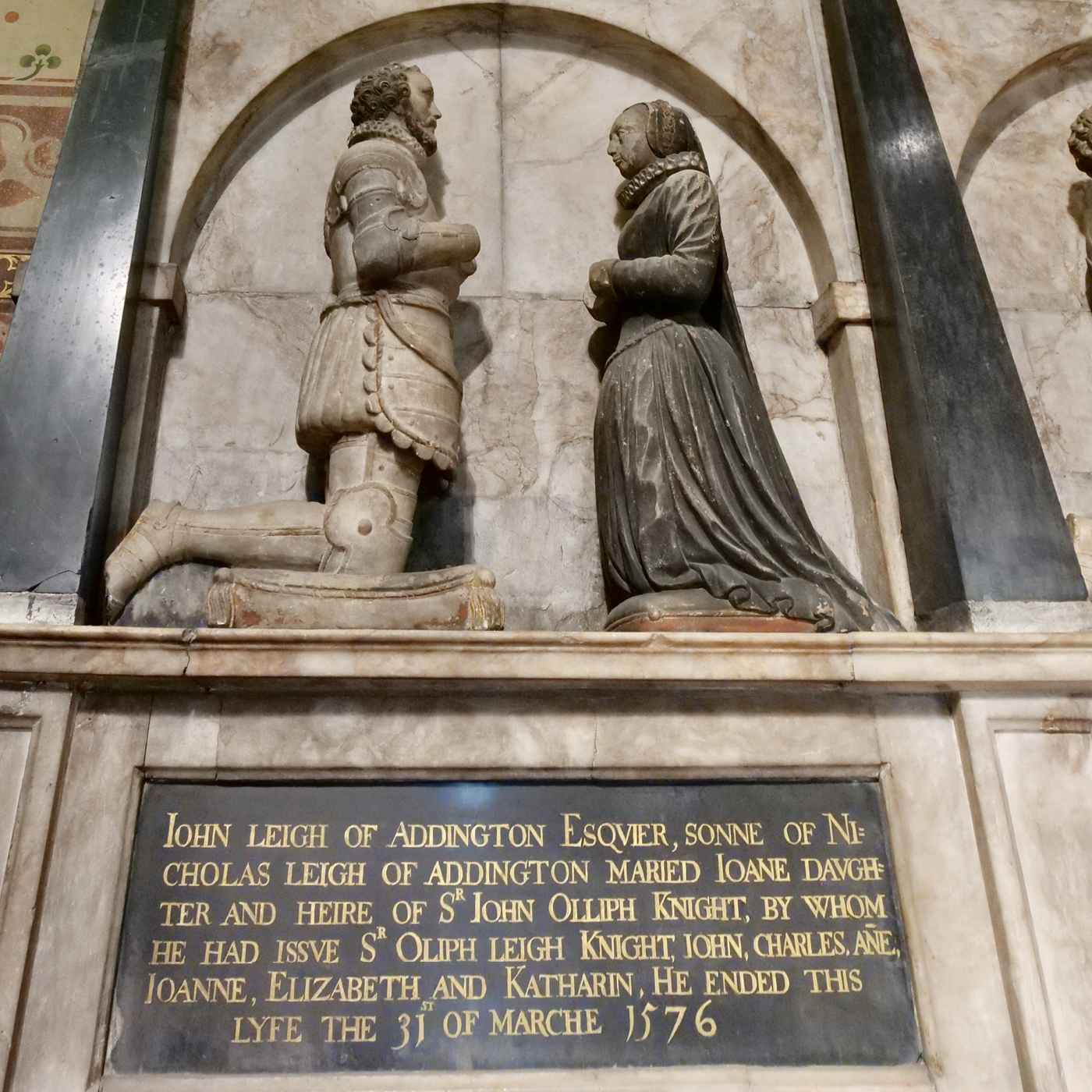
Leaving the church and continuing along the Addington Village Road, you pass some very old flint cottages on your left, then, to stay on the Village Road, you have to cross the main road which turns sharp left and becomes Spout Hill, while you continue straight onto the now quiet cul de sac, which was once the main road to Bromley. On your left you immediately encounter the old village forge – still being used to this day. There is a record of a forge on this site since the 16th century but the current building dates from 1740. It is only open for business on weekdays and Saturday mornings, but if you can time your visit for these hours it is well worth pausing here. I met one of the two men who work at the forge. He told me that his colleague, the owner, is 86 and still works in the mornings. They have an amazing workshop which includes a traditional furnace, an overhead drive shaft which powers numerous tools which cut, grind and bend metal via a system of belts and pulleys. You really are stepping back in time in this place! I was told that during WW2, there was a munitions factory where the Shell garage is now, and the Forge – and current owner – was supplying shell cases to the factory.
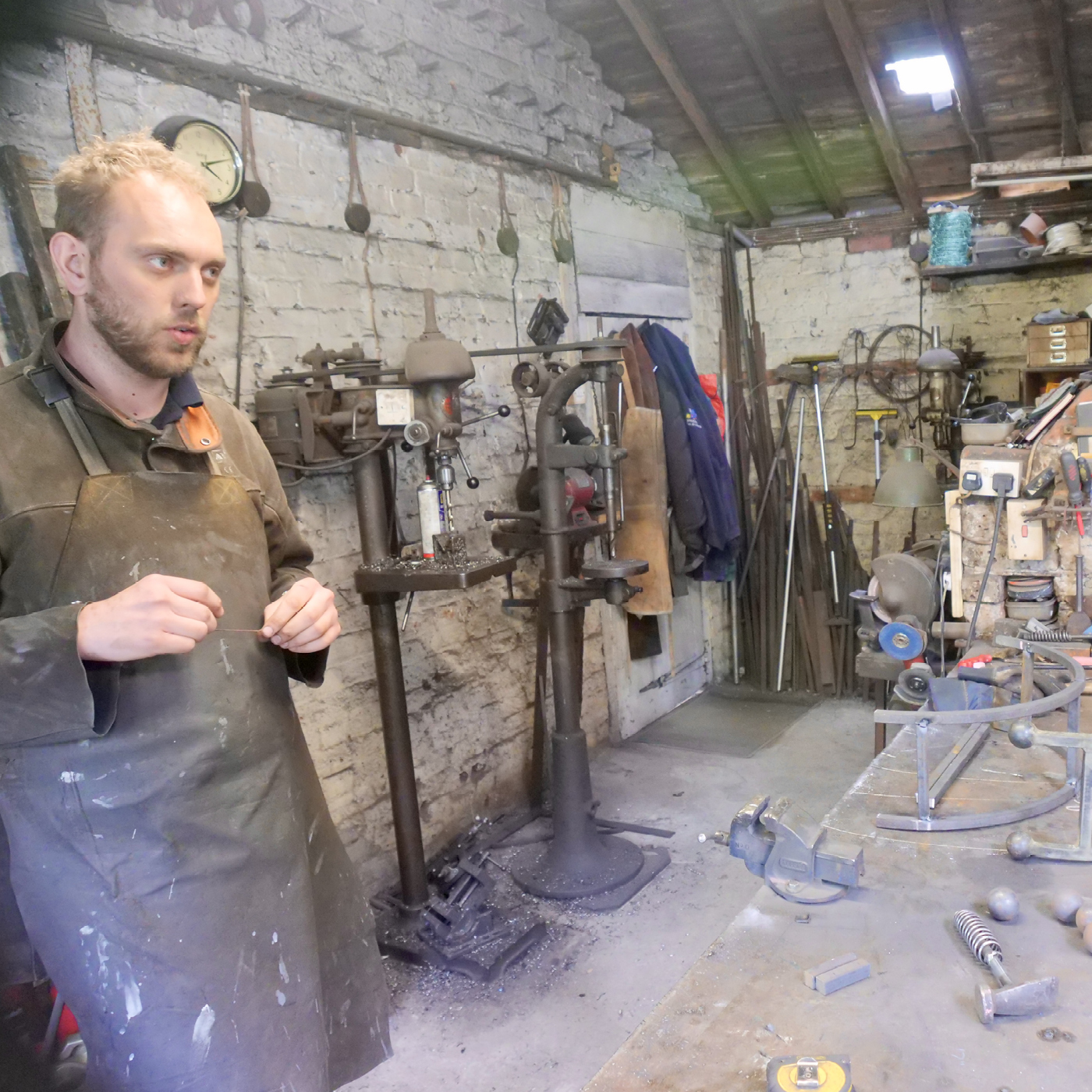
Walking along the road, you pass on your right, the old Post Office, at number 42, and a series of large houses which were once farm managers’ cottages. The entire area where the garage is now, the dual carriageway and the Addington Interchange was farmland before the war. On your left you will pass an impressive village cricket ground, immaculately maintained, which dates back to 1743. If you are lucky, on a summer weekend, you will see a game in progress, and all the players dressed in their best whites for the occasion.
Eventually you reach the old Addington Village road and approach the new Kent Gateway. On your left, there is a wicket gate, which leads into the ancient woodland, known as Three Halfpenny Wood. In 1805 the body of a man, Robert Rutter, was discovered in a pond near the woodland and the only means of identification was the discovery of one and a half pennies which he was known to have had on him when he disappeared from the village of Sanderstead three years earlier. It is believed that the unusual name of this wood is derived from this strange method of identification.
When you walk through the picket gate, you are confronted with a choice of an uphill track straight ahead, and a flat low level track turning right. Take the right turn and follow the low level track across a field. Contrary to the Scottish ballad, you will quickly get lost in a myriad of alternative routes if you choose the high road! You will soon reach the end of the small field and be on a broad path in the woodland. You should quickly notice that this woodland is not like most others which you visit. There are very few heavy oak or beech trees, with massive gnarled trunks indicating their great age. Most of the trees have a white or grey-brown smooth bark and small leaves making a light canopy which allows plenty of dappled sunlight to penetrate. These are a mixture of silver birch and small-leaved lime. It is a lovely feature of this woodland, creating a fairy glen and rather magical feel. The light open canopy provides the ideal conditions for wood anemone and blue bells. From March to May you will see numerous clumps of the pretty white ground based flowers of the wood anemone, with six to eight petals surrounding a bunch of yellow stamens. From April to June you will find gorgeous clumps of English bluebells which have a characteristic drooping flower and a strong scent. The bluebell is lovely to look at, but is protected and poisonous, so for both reasons please do not pick them!
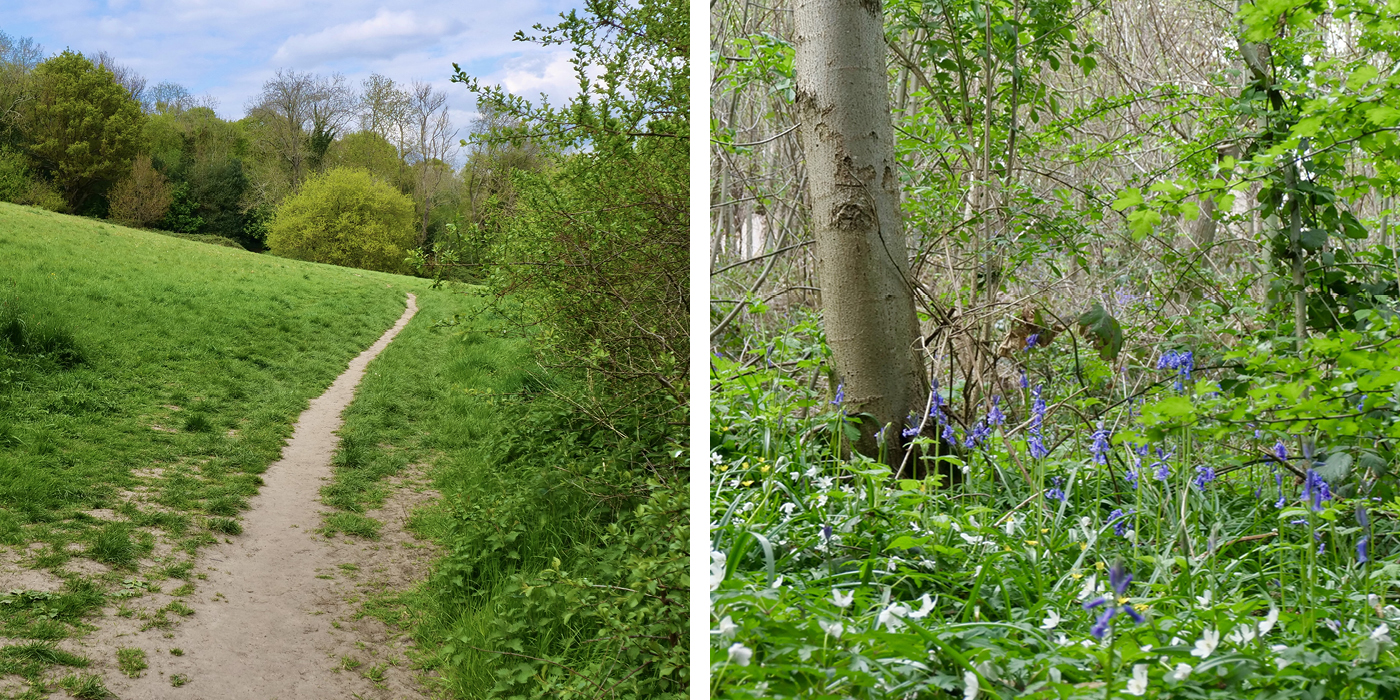
You will quickly come to a stream trickling off the steep hillside on your left and into the open fields which are on your right. Fortunately there is a makeshift wooden bridge. Further along a large tree has fallen, partly blocking the trail, but will not cause you any problem. As you progress the small leaved lime with its characteristic heart shaped leaves with serrated edges become more common. You will be walking along the southern edge of the woodland and shortly pass a prefabricated park maintenance shed on your right which is outside the wood itself. After that you reach a wide opening and a path onto the meadow area.
At this opening, there is an information board on your right which tells you the story of the small leaved lime tree. Their presence is evidence that this is indeed an ancient woodland, left over from the Great North Wood which once stretched across much of what is now South London suburbs, including our Croydon suburb called Norwood. The buried pollen record shows us that in this Great Wood, lime trees were the dominant species. In the Middle Ages, the fibrous bark of the lime was used for rope making and the wood was used for carving.
On your left, after you have passed through the opening into the field, you will see a track leading to an area protected by a wooden fence. Follow the path, noting the impressive mole hills in this field, many of which are always showing freshly dug soil as evidence of the previous night’s industrial activity of these rarely seen rodents.
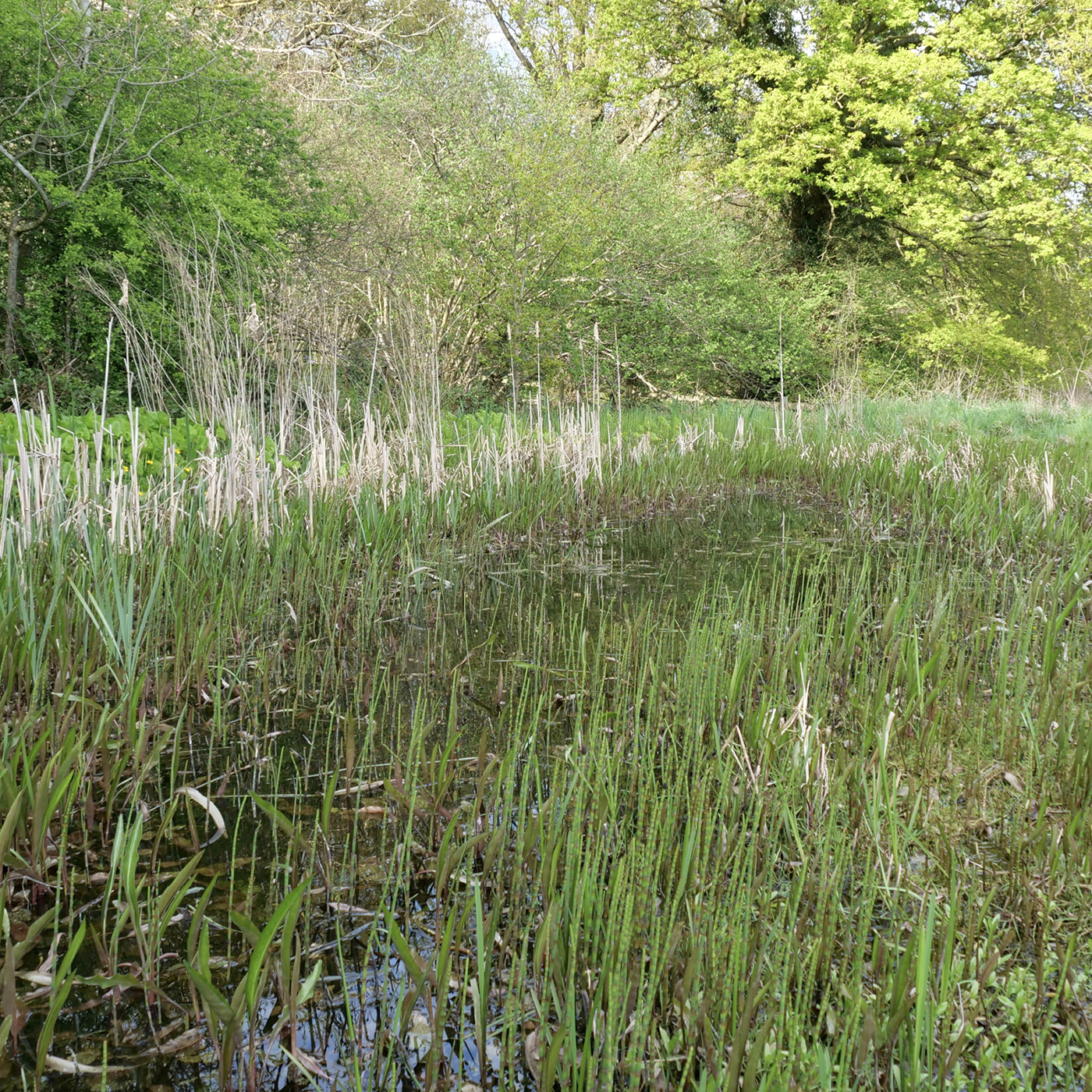
The fenced off area is there to protect a really delightful pond which is shaded by a sprawling oak tree at the far end. There is a gate and a notice asking you not to let dogs into the area, as they will enter the pond and stir up mud. The importance of this becomes obvious when you enter, and see how clear the water is. When I visited in April the water was alive with tadpoles – not just at the margins but across the whole pond. Clearly there is a lively population of amphibians here. On the surface of the pond were numerous pond skaters darting about on their fragile world of surface water. The most interesting feature, however, is the profusion of green reeds with a bamboo-like jointed stem. These are horsetails – an ancient plant whose fossils date back 250 million years to the Triassic period. They are definitely rare; I have not seen them in any other Croydon pond. Our ancestors used them to stem bleeding and for scouring.
I am sure that this pond will be a delight throughout the year, and am looking forward to visiting in the mid summer when there should be plenty of dragonflies and damselflies. The pond is fed from the chalk streams running off this hillside onto the meadow below. I would like to claim that it was an ancient pond, but there were plenty of signs that it is artificially built and maintained. Nevertheless it is a definite enhancement to the area and well worth a visit.
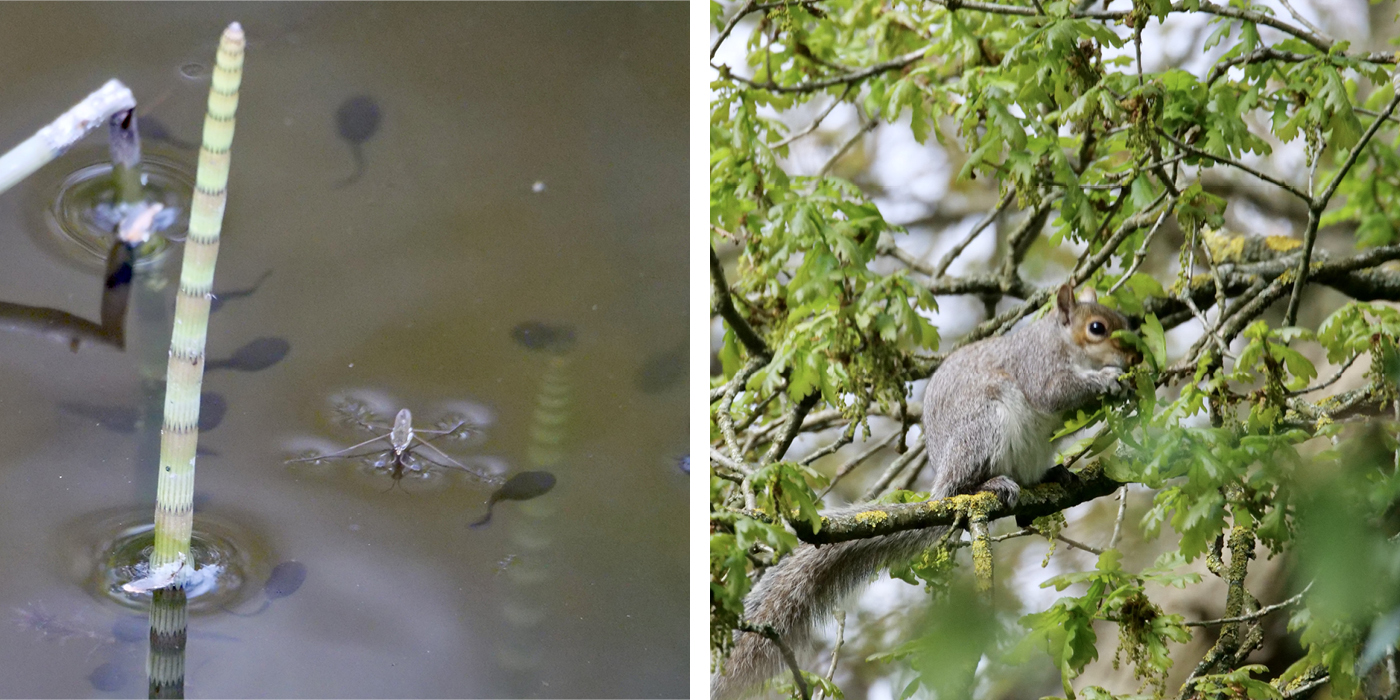
You can leave the pond and return to the original woodland track by a path beside the pond. Continue walking eastwards until you meet a broad path coming in from the left. You are now in Bromley. Take that path which goes steeply uphill for a few hundred yards until it meets another high level east-west path which has a wooden sign post directing you to turn left to get back to the Three Halfpenny Wood (which is in Croydon). Turn left here. The path is broad and well signposted as it is also the London Loop footpath.
You quickly come to a part of the path which opens out into an area where trees seem to have been felled and there is something of a clearing. Look closely into the woods on your left and you will see a pile of horizontally laid silver birch branches which is an indication of a second pond in these woods. There is a short narrow path leading to it from the main route. However, by comparison this pond is rather poor – muddy water covered in weed with little of interest. It is one of two small ponds in Three Halfpenny Wood, but sadly neither have been as well protected and cared for as the Spring Park Pond we have already visited. The second pond is deep in the woodland, quite hard to find and the presence of human waste – water bottles, cans etc – makes it not really worth the detour. I have read that these ponds may have been created by German Bombs in WW2 having been dumped on their way to or from London.
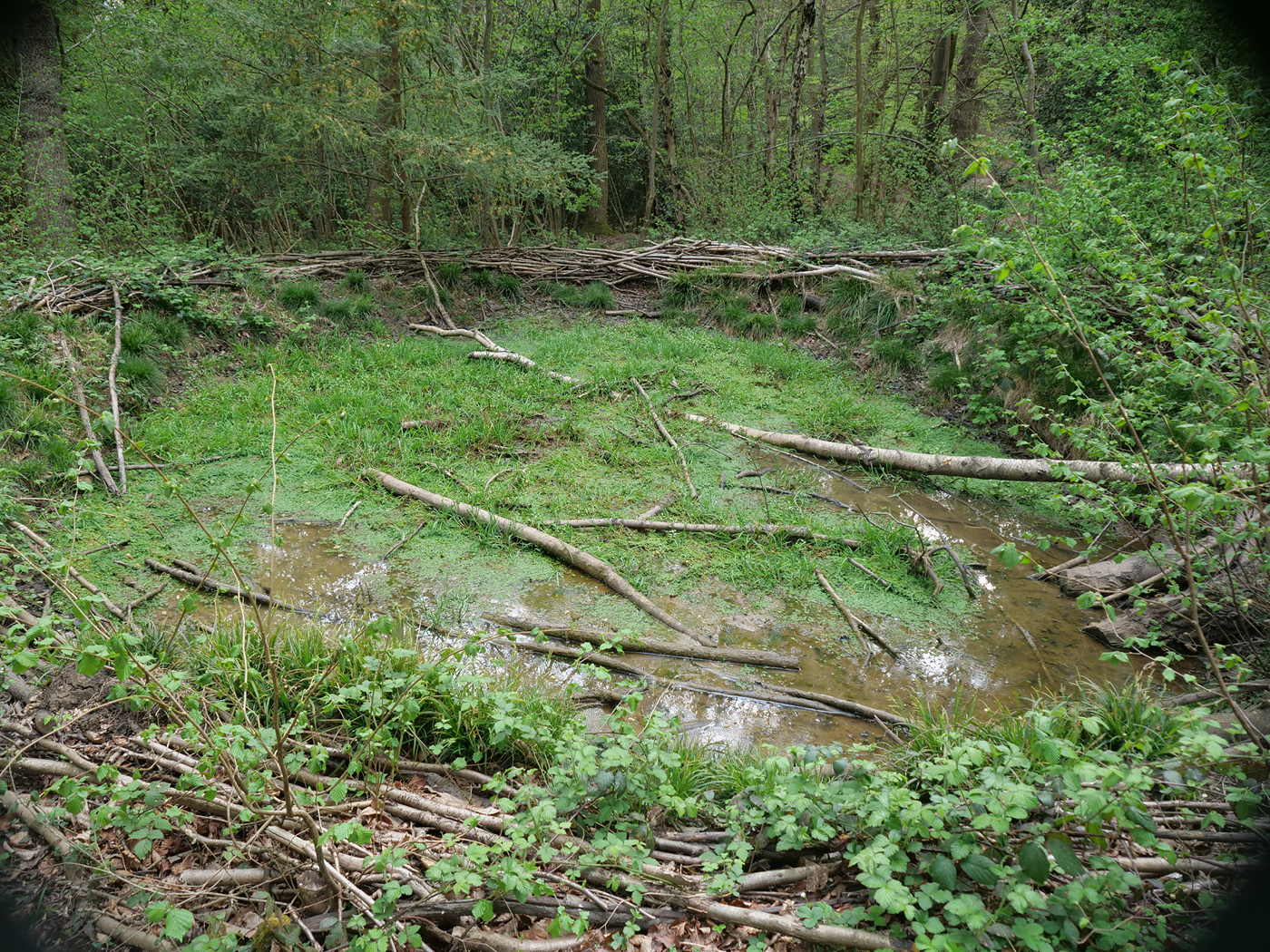
Return to the main path, following the London Loop signs until your path swerves uphill to the right and you come to a major junction path on the left. This path can easily be identified by the pair of black and white standing posts further down the path, suggesting it is the start of a more significant road. Take that route and you will quickly find yourself walking on a gravel track, through a secluded residential area of large rustic homes, with wrought iron gates, set well back from the road where the wealthiest citizens of Croydon can enjoy a rural lifestyle within a London borough. The quality of the road improves, it acquires a name “Bridle Way” and you eventually join the main southbound road which goes back to Addington Village. Bridle Way is recorded on a Croydon Council website as being one of five “ancient tracks” through the forest.
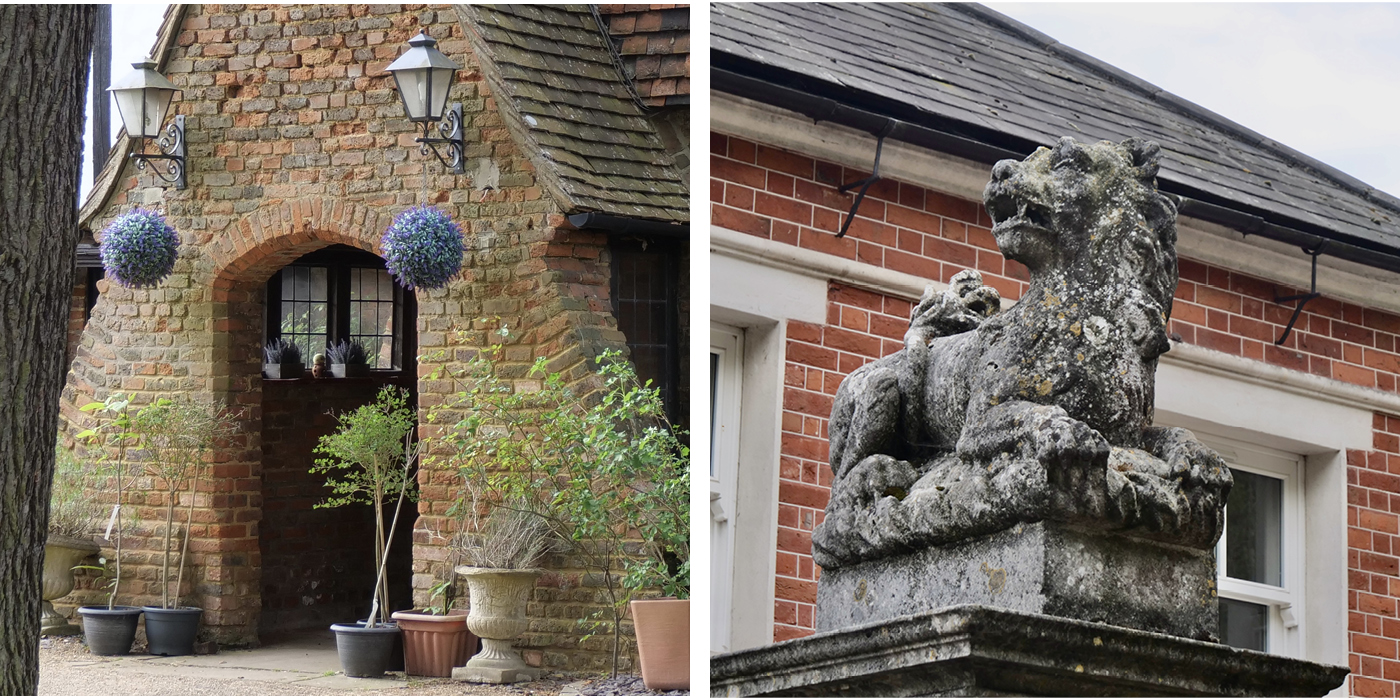
It is a steep downhill walk back to Addington. On the way you will pass on your right the impressive gates and the two gate houses of the Lion Estate. This pair of gatehouses mark the entrance to the original mediaeval Manor house. They were built in 1780, at the same time as Addington Palace by the Archbishops. On each side of the gate is a post supporting a weathered statue of a lion. The Lion was the family symbol of the Leigh family mentioned earlier, whose ancestors feature so heavily in Addington Church.
Continue down hill, past the rather impressive old rectory and you will return to the road on which we arrived and be able to retrace your route to the Addington Interchange.
If you’d like to explore further around Three Halfpenny Wood and its adjoining greenspaces see the Croydonist Shirley Heath feature here.
Posted by guest writer Peter Hall (all photos courtesy of Peter).
If you missed The Green Line Part 1, you can read it here.
If you missed The Green Line Part 2, you can read it here.
If you missed The Green Line Part 3, you can read it here.
If you missed The Green Line Part 4, you can read it here.
Peter lives, works, walks, and often runs in Croydon – always with his camera – visiting green spaces and places with an interesting history. He is a keen Instagrammer who loves to give and receive comments on his peter_at_croydon account.
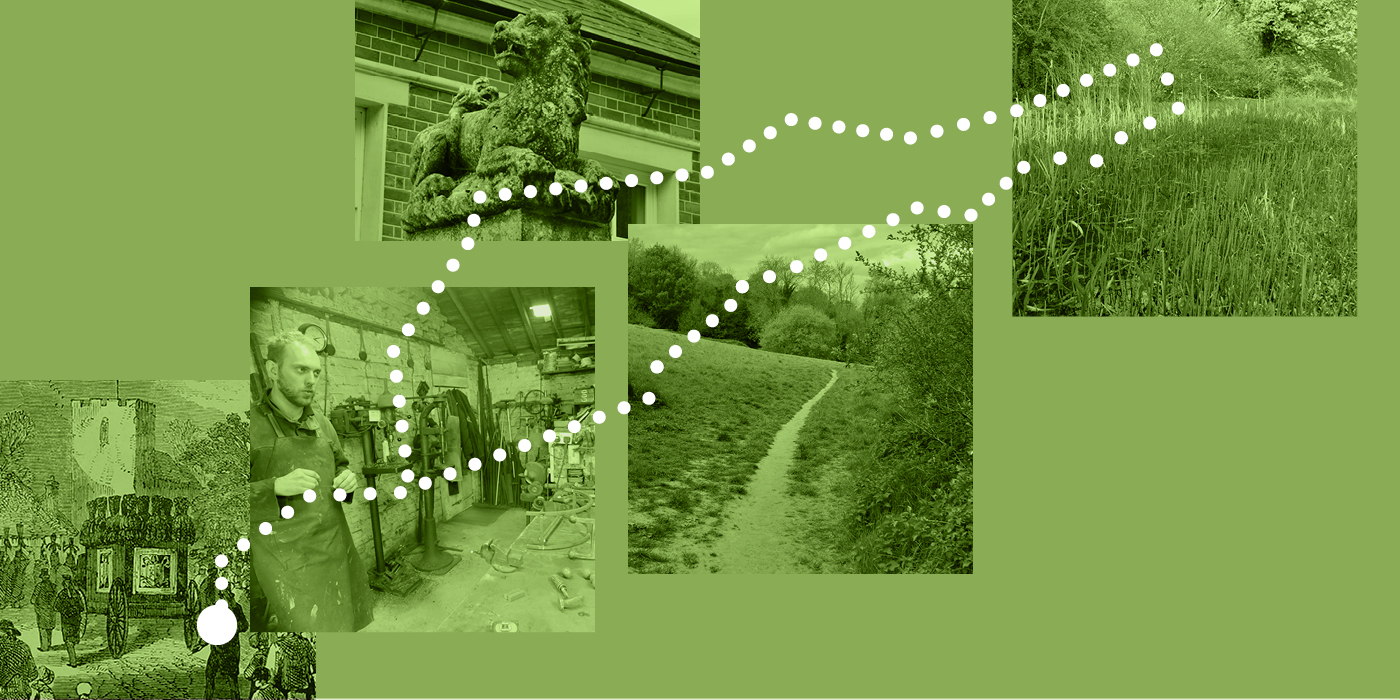

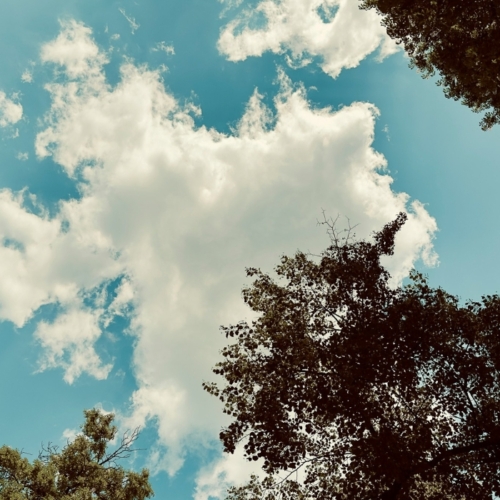

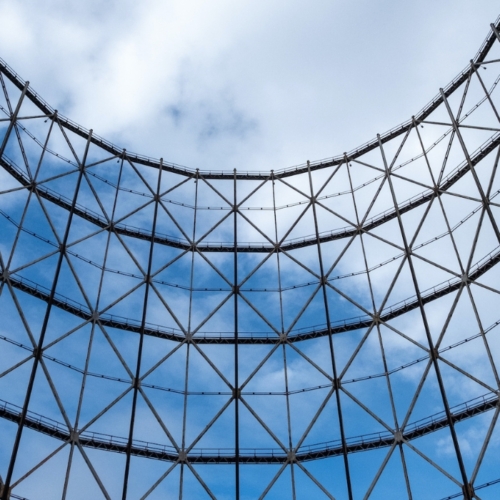
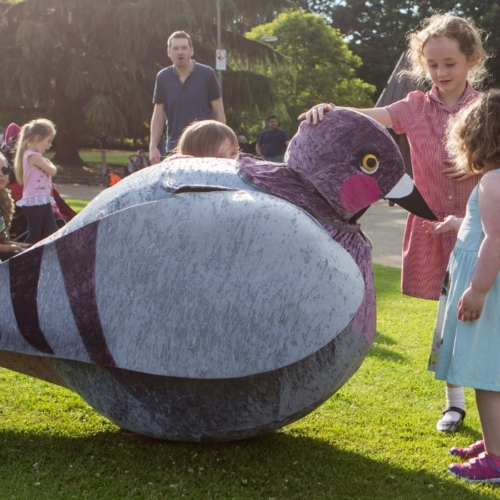
No Comments